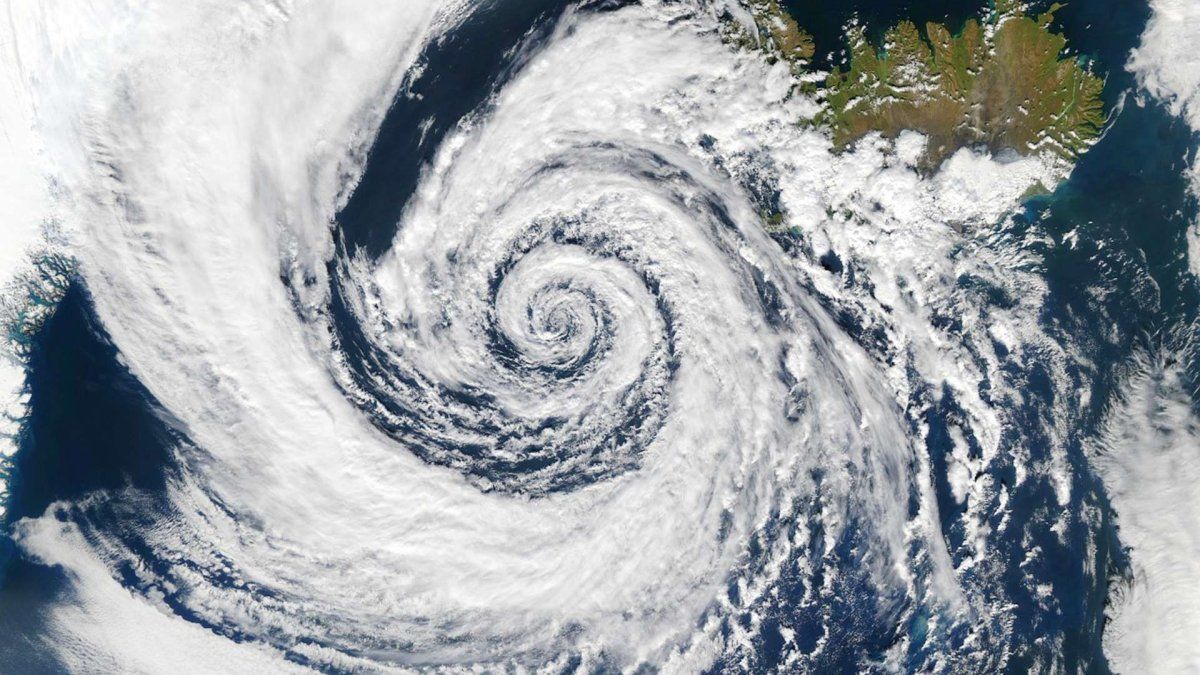The week in the City of Buenos Aires and the Buenos Aires metropolitan area It is kept in good condition climate. Meanwhile, a Meteorological alert due to the arrival of an extratropical cyclone in Argentinawhich will affect several provinces. There is also a warning for the Zonda wind and rain in several areas of the country.
For this Tuesday, September 17continues with mild weather and good conditions, although the return of rain and even storms is taking hold, according to the weather forecast of the National Meteorological Service (SMN).
In this way, the agency predicts a Tuesday with mostly cloudy skies from dawn until night; while temperatures temperatures between 14 degrees minimum and 23 degrees maximum are expected.
Weather: the weather forecast for AMBA
He Wednesday The weather is expected to be good, with partly cloudy skies expected throughout the day, accompanied by temperatures between 13 and 23 degrees.
Meanwhile, the Thursday Bad weather is expected to return, with cloudy skies and the possibility of isolated thunderstorms in the afternoon and evening. The thermometer is expected to hover between an estimated minimum of 16 degrees and a maximum of 22.
Argentina is preparing for the arrival of an extra-tropical cyclone and several provinces have already launched protective measures in response to the warning signal from the National Meteorological Service. Which provinces will be most affected and how will the meteorological phenomenon impact the local soil?
climate-obelisk-buenos-aires.jpg
Good weather in the city and surrounding areas.
Depositphotos
Meteorological alert for extratropical cyclone: which provinces are affected
The extratropical cyclone is approaching Argentina from the South Atlantic and is bringing with it strong gusts of wind, low temperatures and storms. Several provinces will be affected between Wednesday 18 and Thursday 19 Septemberwhen the thermal sensation drops to 5° in some areas.
Buenos Aires It will be one of the provinces hardest hit by the extra-tropical cyclone: the province will experience a drop in temperature, with a minimum of up to 8° and gusts of wind of 50 km/h, which will mark the return of the cold.
In addition, scattered showers are expected and the sky will be cloudy throughout the day. The following day, Thursday 19, the wind gusts will become stronger, and during the day the temperature will remain similar to Wednesday. On Friday, the temperature will rise and reach 18°.
In addition, the National Weather Service The coast will also be affected by storms and the possibility of hail in Entre Ríos. In the south, Tierra del Fuego is on yellow alert for strong winds. Finally, in the northwest of Argentina the same alert is in effect, although there will be no rain or precipitation.
Over the weekend, it is expected that the climate The weather is expected to return to mild weather at least in the province of Buenos Aires, as the strong extra-tropical cyclone from the South Atlantic has dissipated. For the moment, the SMN has not issued any more meteorological alerts about this climatic phenomenon, which is putting Argentines who have to travel on the streets in the coming days on alert.
What is an extra tropical cyclone
An extratropical cyclone, also known as a mid-latitude storm, is a low-pressure system that develops at latitudes outside the tropics, according to the United Nations Office for Disaster Risk Reduction (UNDRR). They are often associated with cold, warm and occluded fronts and can occur over land or sea.
It is named for the location where the cyclone occurs, which typically occurs at mid-latitudes between 30° and 60° latitude from the equator.
Storms of this type are driven by temperature differences where two air masses meet and create a “front.” That is, they get their energy from horizontal temperature contrasts that exist in the atmosphere, explained the National Park Service (NPS) of the United States.
The United Nations office notes that “the total life cycle of an extratropical cyclone, from its birth (genesis) through its development to its decay (lysis), can occasionally be more than 10 days, although it is more common to range from 2 to 5 days.”
Source: Ambito
I am Pierce Boyd, a driven and ambitious professional working in the news industry. I have been writing for 24 Hours Worlds for over five years, specializing in sports section coverage. During my tenure at the publication, I have built an impressive portfolio of articles that has earned me a reputation as an experienced journalist and content creator.




